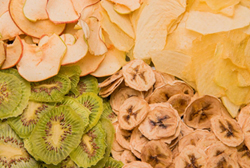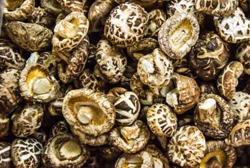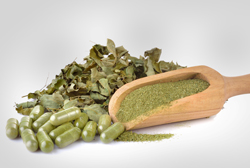Dinesh Gupta, Director, Bry-Air | Food & Beverage News | November 1-15, 2021
Food Drying is one of the most conventional methods of food preservation. Dehydration, as a process has been used widely for centuries. The basic aim of drying is to reduce the quantity of water from the food material which is required for microbial growth. Different variety of food requires various drying methods to improve their shelf life and palatability. Many types of food can be preserved for indefinite periods by extracting moisture, thereby inhibiting the growth of microorganisms in them. Dehydration of products, also, substantially lowers the transportation cost, handling and storage costs as well. Fruits and vegetables like Onion, Garlic, Ginger, Turmeric, Apricot, Apple, Pineapple, Grapes, Walnut Kernels, Dryfruits (Almond, Pista etc.), Coconut, Katha, Dates and many more have to be dried to the desired moisture content at low temperature. These dehydrated foods also tend to pick up moisture from surrounding air during processing, packaging and storage.
In addition, drying up of food items reduces the bulk and weight of the product, at the same time retains the taste and appearance of the original food. In today’s time, seed-drying has become an important aspect because it reduces the seed moisture content and helps in better germination and growth of the plant, which ultimately leads to a high-quality product. Hence, drying limits the subsequent rate of seed deterioration during long-term storage.
However, there are various methods of drying such as air drying, sun drying and wind drying. Even nowadays, freeze-drying and electric food dehydrators are being used to speed up the drying process.

Moisture is an important factor in agricultural and food materials affecting their shelf life mainly due to microbial spoilage, oxidation and breakdown of the physical structure of the foods. By reducing the active quantity of water from food product stops the growth of microorganisms. This also results in a reduced rate of enzyme activity and chemical reactions. The processing should be done in such a way that the food value, natural flavour and characteristic cooking quality of the fresh material are retained after drying.
Conventionally, products are dehydrated with hot air! However, most food products which require drying are temperature sensitive. Additionally, dehydrated food if exposed to a humid environment even for a short time, absorb water from surrounding air and become soggy and unappetizing.

Every food item requires drying because of two main factors like; extend the shelf life of the product and tackle the moisture menace at every stage of food processing.
For example, different varieties of products that are grown in different climatic conditions such as Mushroom, Moringa Leaves, and Spices also goes through the process.
Mushrooms are made of 90% water and have a shorter lifespan. Thus, mushrooms are dried to elongate their lifespan and retain their flavour. Excess moisture can destroy its key characteristics before it reaches the final consumer. Some of the common problems faced by mushroom farmers and distributors are mould growth (if they are not dried properly) and turning into a pool of black goop. To prevent this, mushrooms not only have to be stored in cooled dry places but also need humidity control during drying, packaging and storage. Dehumidifiers play an incessant role as it maintains dew point as low as -60ºC (-76F°) regardless of ambient conditions.
Moringa oleifera (also known by the name of Saijhan and Drumstick) is an exceptionally nutritious vegetable tree, but drying the leaves is the most critical aspect of processing the product. The leaves are dried in a place protected from sunlight to prevent the loss of vitamins and minerals. The drying should be done immediately after harvest to prevent the growth of moulds and to achieve the best quality of dried leaves.
Other than this, the dried and powdered spices are highly hygroscopic in nature which absorbs moisture from the surrounding air when humidity is high and becomes sticky. In the packaging process, the sticky powder clogs the filling systems and affects the free flow during the packaging operation.
The damp powder also sticks to the wrapping paper slowing the process and creating hygiene problems. It also decreases the shelf life of the product. When spices like cardamom, cinnamon, chillies are not dried properly, they lose their aroma, colour and flavour.Inadequately dried cardamom causes mould, making it unfit for processing and longer storage. Even leaves of cinnamon possess a substantial amount of volatile aroma which are lost if the leaves are dried at recommended temperature. Moreover, moisture can lead to microbial growth, which can make the consumer ill if consumed in the same state.
To preserve the flavour, aroma, colour, freshness and reduce the product spoilage, spices have to be dried at low temperatures. For spice drying Bry-Air Tray Dryer is one of the most effective solutions. It consists of a chamber with trays to dry the spices.

This unique air distribution pattern optimises drying capacity and time. Bry-Air Dehumidifier is recommended for humidity control as it continuously feeds dry air to the chamber, regardless of the ambient conditions, at a very low dew point.
Both mushrooms and spices hold a good demand across the globe whereas India has a good market share, especially in spices. India is known for the superior quality spices and variety of mushrooms wherein dehumidification can play a subtle yet important role during processing, storage and packaging.

Authored by:
Dinesh Gupta, Executive Director,
Bry-Air Asia Private Limited




